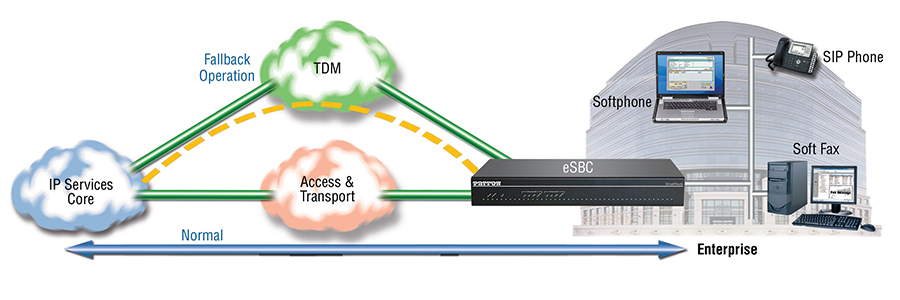Most businesses will NOT switch to IP telephony without guaranteed survivability. Internet telephony service providers (ITSPs) must deliver on-premise survivability options. So how can you ensure the enterprise phone system is going to work—even when the Internet goes down?

The new age of All-IP networking has arrived. Now that session initiation protocol (SIP)-based telephony is well established, enabling broad adoption of unified communications (UC), the traditional Public Switched Telephone Network (PSTN) seems a bit clunky and old-fashioned. Yet that old PSTN was—and still is—highly reliable. As carrier-providers—and their subscribers—plunge head-first in to the sea of IP Telephony, the good old PSTN remains good solid ground—a trustworthy plan B—for those inevitable times when your subscriber’s
Internet connection fails… for whatever reason.
Another way (in addition to PSTN backup) to solve the uptime problem with Internet-based phone systems is for the subscriber maintain dual access links
with separate Internet service providers (ISPs)—ideally over different physical cabling plants with varied networking providers (fiber-optic Ethernet, coaxial
cable-modem, copper DSL). This multi-provider approach is highly resilient. In addition to providing a backup plan for the broken WAN access link, it covers
potential hardware or software failures in the service-provider cloud. As another layer of redundancy for added resilience, a second Internet Telephony
Service Provider (ITSP) may be added to the mix.
The Crux of the Problem
Whether your subscriber is operating a business, hotel, school, church or hospital, the problem is the same. How are you going to keep your customer’s phone system working—no matter what?
Cloud PBX
In this age where the PBX is often in the cloud, the unfortunate reality is that a loss of connection to the cloud service, for any reason, breaks station-tostation calls within the enterprise, kills 911 emergency services and wipes out inbound and outbound call capability.
SIP Trunks
In SIP trunking implementations, where the IP-PBX resides on-premise, a broken Internet access link kills inbound and outbound calling. However the PBX can still support station-to-station calls between SIP terminals within the local area network).
Patton offers a flexible solution for enterprise-telephony survivability and business continuity that employs an intelligent enterprise session border controller (eSBC)—equipped with the necessary features and functions—installed on the subscriber premise. To learn about the details, get the white paper…
>>Enterprise Survivability in the Age of All-IP Telephony
What do you think?
- What is your approach for ensuring survivable IP telephony at the enterprise subscriber premise?
Add your thoughts in the comments below…
